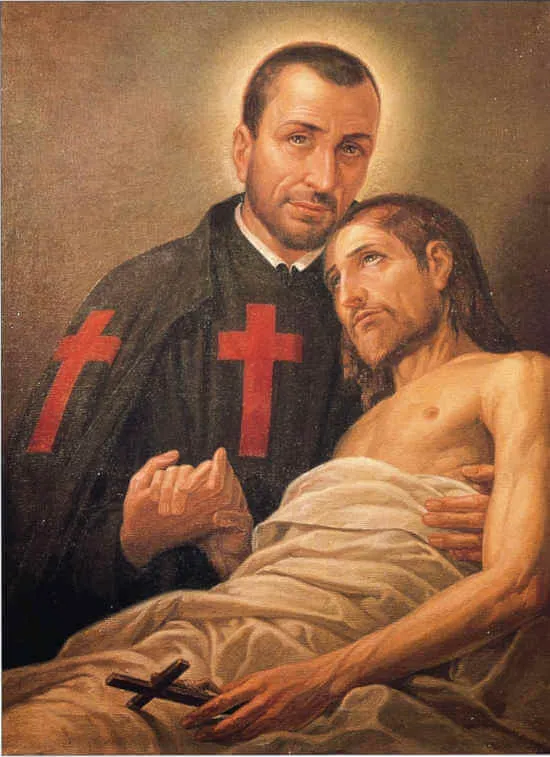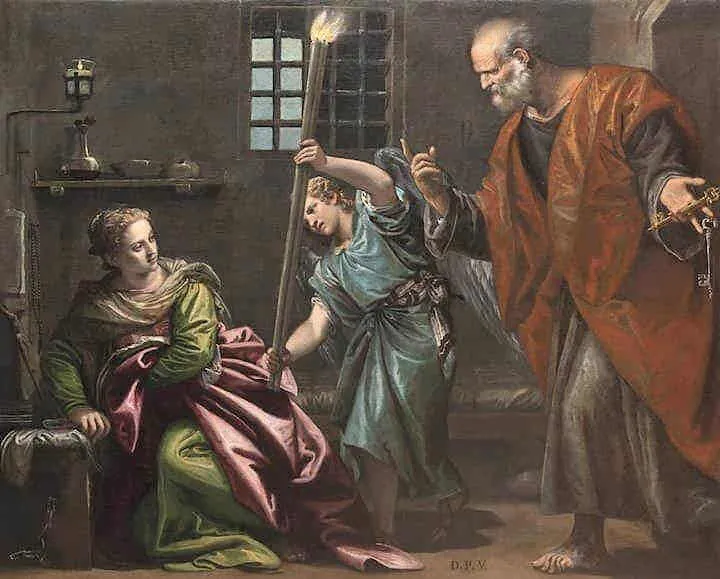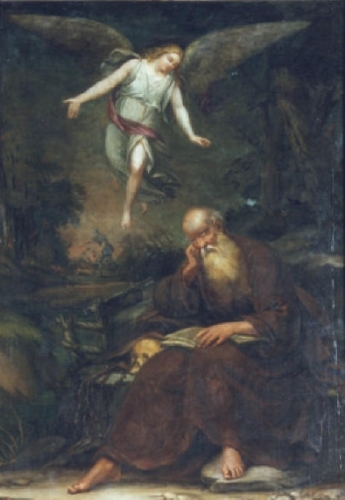1550–1614; Patron Saint of the sick, hospitals, hospital workers, nurses, and nursing associations; Invoked against the vice of gambling; Canonized by Pope Benedict XIV on June 29, 1746
Camillus was born in the Kingdom of Naples. His mother was in her late forties when he was born, and his father was a soldier who was often away from home. Before his birth, his mother had a dream that she would give birth to a son who would wear a red cross on his chest and lead others with the same cross. However, Camillus’ mother died when he was young, leaving him mostly on his own. In his teenage years, Camillus joined his father on military campaigns where he fell into the vice of gambling and constantly experienced destitution. He wounded his leg on one campaign, which never properly healed.
In Camillus’ mid-twenties, his military regiment was disbanded, and he found his way to a Franciscan friary where he obtained menial work. One day, a saintly friar spoke with him, saying, “God is everything. The rest is nothing. One should save one’s soul which does not die.” This had a profound impact on Camillus. Shortly afterward, he fell on his knees and prayed, “Lord, I have sinned. Forgive this great sinner! How unhappy I have been for so many years not to have known you and not to have loved you. Lord, give me time to weep for my sins for a long time.” After this initial conversion, he applied to the friars for admission as an apprentice, but his application was rejected due to his unhealed leg wound.
Since the wound on his leg was deemed incurable, Camillus traveled to Rome and found work at Saint James Hospital for the Incurable. There, he received treatment while caring for the sick and dying. He also began living a life of deep prayer and penance.
At that time, hospitals for the dying were not as they are today. Many hospital workers were society’s rejects. Caring for the sick and dying was considered a lowly and undesirable task, and many did it only to make a meager living, not as a sincere act of mercy. Camillus’s newfound faith and penitential life made him stand out in the hospital. He became such an inspiration that he was made the hospital’s director. As director, he tried to form a lay association of charitable hospital workers, but his efforts proved fruitless. Fortunately for him, he met Saint Philip Neri, who became his spiritual director. Saint Philip encouraged him in his work and suggested that he become a priest to bring his calling to fruition. Thus, with the help of Saint Philip, he found a benefactor, completed his theological studies, and was ordained a priest at the age of thirty-four.
As a priest, he and his group of merciful hospital workers began serving the sick at Holy Spirit Hospital in Rome. They made quite an impression. They served not for money or because they could find no other work. They served out of charity, according to the vocation given to them by God. In addition to caring for those at the hospital, they ministered to the homebound and to everyone they found sick or dying. In 1586, after Camillus had been a priest for only two years, Pope Sixtus V formally approved his new congregation, named the Order of Clerks Regular, Ministers of the Infirm (M.I.), later known as the Camillians. In addition to taking the traditional three vows of poverty, chastity, and obedience, they took a fourth vow of “service to the sick poor, including the plague-ridden, in their corporeal and spiritual needs, even at risk to their own life, having to do this out of sincere love for God.” In 1591, Pope Gregory XV raised the congregation to the level of a Religious Order. They wore a black habit with a large red cross over their chest, just as his mother had dreamt before he was born.
In the years that followed, Father Camillus and his new order of ministers to the infirm expanded to other hospitals and towns, cared for those suffering from various plagues, and tended to soldiers wounded in battle. By the time of Camillus’ death, the order had expanded throughout Italy and even into Hungary. Though his wounded leg remained a source of much suffering throughout his life, he never allowed it to deter him from his work, even if he had to crawl to a patient’s bedside. His holiness was evident, as were the gifts of prophecy and healing. After his death, religious sisters were formed according to his order’s charism, as were lay associations.
In his service of the poor and sick, Saint Camillus was serving Christ. When he ministered to those who were suffering the most, with the most repulsive infirmities, he was drawn to them as he was drawn to the suffering Christ. His tenderness and compassion did much for their physical well-being, but it did much more for their eternal souls.
As we honor this great founder and saintly convert, consider the contrast we find in his life. He was mostly abandoned and fell into grave sin as a youth, but God touched him and transformed him, doing great things through his life. As you consider his life, consider also your own weaknesses and sins and know that there is always hope for you and for others, and that God can transform your life in glorious ways, doing great things in and through you.
Source: https://mycatholic.life/saints/saints-of-the-liturgical-year/july-14—saint-camillus-de-lellis-priest/







